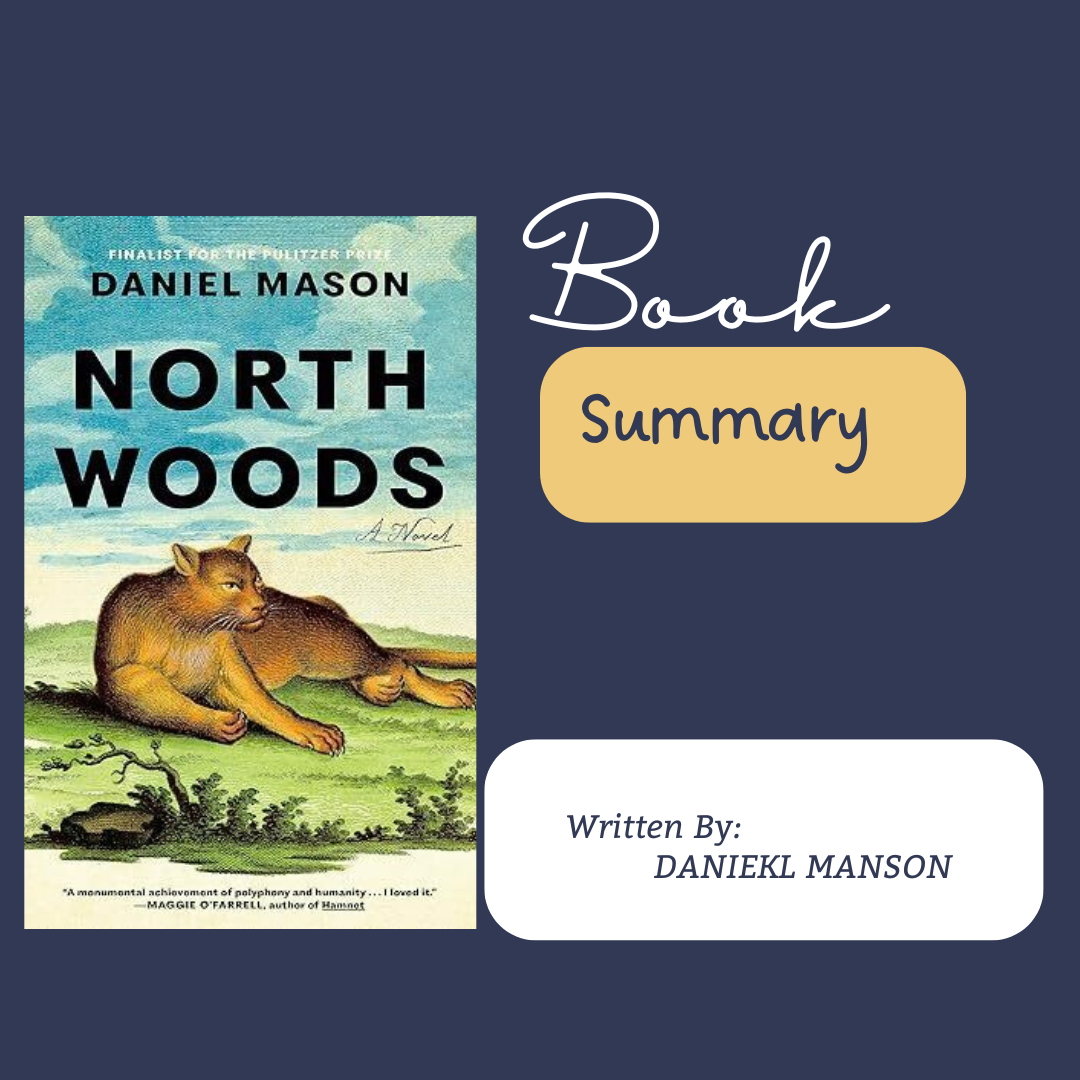North Woods Summary
Introduction:
North Woods is a genre-blurring historical fiction novel by Daniel Mason, published in 2023. It presents a sweeping tapestry of human and natural history centered around a single house in New England—known simply as the “north woods.” Spanning centuries, it weaves together stories of survival, longing, decay, and renewal. Through letters, poems, case notes, songs, and prose, Mason crafts a mosaic narrative that captures how places—and memories—endure. Here is an in-depth North woods book summary.
Main Characters:
- The Puritan Lovers: The novel opens with two young lovers fleeing a restrictive Puritan colony to settle in the woods—marking the genesis of the house’s long history.
- Charles Osgood and His Twin Daughters (Alice & Mary): An English soldier turned orchardist who establishes the charming yellow house and plants an apple orchard. His daughters’ complex, tragic bond adds a gothic undertone.
- Esther (The Captive Girl): An escaped enslaved girl who finds refuge in the house, blending personal resilience with historical urgency.
- William Henry Teale & Erasmus Nash: A closeted landscape painter and his novelist lover whose secret love affairs haunt the place beyond their earthly lives.
- Farnsworth & Anastasia: A 20th-century hunting lodge owner and a faux psychic; their attempts to shape the house’s story are disrupted by its lingering past.
- Robert & Helen: Robert, diagnosed with schizophrenia, films ghosts in the woods; his sister Helen inherits his recordings—blending mental health, memory, and loss.
- Morris Lakeman: A historian obsessed with unearthing the house’s layered past, who dies before connecting all the threads.
- Nora (The Botanist): In the present era, Nora dies in a car accident on the property, encounters the ghost of Osgood, and stays as a silent observer of the land’s ceaseless evolution.
Summary:
The novel unfolds as a series of interlinked narratives across roughly 12 chapters—each aligned with a month—mapping the evolution of a modest cabin into a lemon-yellow house beneath towering woods. Mason employs varied forms—journal entries, letters, ballads, scientific notes, crime articles—to capture voices across time. Every chapter introduces new inhabitants—Puritans, orchardists, slaves, artists, psychics, scientists—alongside non-human actors: beetles, seeds, panthers, spores—that underscore the intertwined destiny of nature and humanity.
Notable moments include the growth of an apple tree from a soldier’s grave, the spectral presence of past lovers, ecological shifts portrayed through beetles and blights, and a sense that the land itself holds memory. As later characters encounter echoes of past lives, the forest’s cycles of destruction and regeneration serve as a reminder: history persists, though transformed.
Themes and Analysis:
- Interconnection of Nature and Humanity: Stories of people and land are inseparable, woven together in every gesture—from the planting of trees to the echo of voices.
- Endurance Over Time: The house—and the woods—bear witness to generations, disasters, and rebirths.
- Forms and Memory: Mason’s use of diverse textual formats deepens the texture of storytelling and memory.
- Ghosts and Haunting: Spectral presences—both literal and metaphorical—reflect unresolved emotions and histories that refuse to vanish.
- Cycles of Change: The novel insists that the world is not merely loss, but transformation—and hope.
Conclusion:
North Woods is a masterful, genre-defying novel that elevates a single place into a living chronicle of human and ecological history. With poetic grace and structural daring, Daniel Mason invites us to see history not as a sequence of vanquished moments, but as an ever-turning landscape of rebirth. Its haunting, lyrical prose makes this novel both intimate and epic—a literary tapestry that lingers.

